Text
Friendly reminder that:
The concept of starseeds promotes ableism by minimizing or denying ADHD and autism.
The ancient astronaut hypothesis promotes spiritual colonialism and destruction of other cultures by twisting other people's mythologies and sacred texts to fit their narratives.
The reptilian alien mythology is based on conspiracy theories historically used to justify oppressing and murdering real people. Loosh/blood/adrenochrome harvesting is just repackaged blood libel.
New Age mythology is chock full of repackaged right wing conspiracy theories, the same kind pushed by QAnon.
It's also full of repackaged racist pseudoscience about genetic superiority/inferiority and the function of evolution.
Ascension to 5D was supposed to have happened back in 2012, and the prediction failed.
New Agers are recycling their predictions over and over to catch new waves of people who don't know the movement's history.
Belief in Atlantis is strongly motivated by white supremacy.
For more info, see:
Looks like it's time to talk about starseeds and the New Age movement again.
How the mythology of starseeds, indigo children, crystal children, rainbow children, etc. harms kids
New Age YouTube channel caught recycling claims of imminent "first contact" for three years
Is the spiritual person a conspiracy theorist? A list of red flags
What is spiritual eugenics?
New Age beliefs that derive from racist pseudoscience
2K notes
·
View notes
Text
Remember when historian Diane Purkiss chose violence? 🤣
“In this essay, I will show that medieval and early modern witchcraft was for the most part not a pagan practice, but a dissident form of Christianity. I will also argue that modern pagans and modern witches are themselves products of the very globalized, commercial, urban and anywhere culture which they set out to resist.”
271 notes
·
View notes
Text
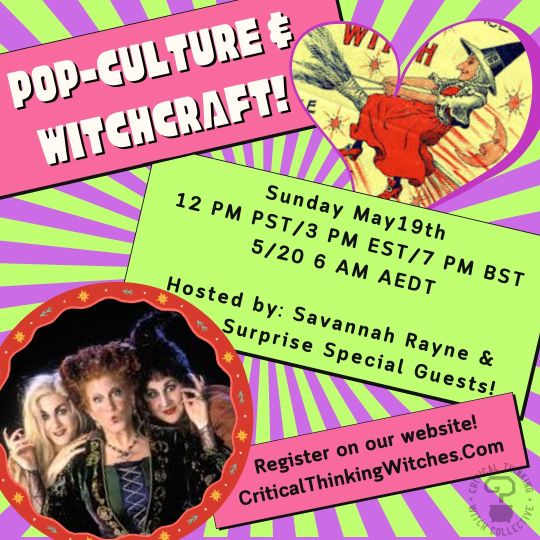
Good news, Critical Thinking Witches! We've got another FREE Witches' Brew coming!
Savannah Rayne (DIYWitch) will be hosting a Brew on Pop-Culture and Witchcraft with some surprise special guests!
Sunday May 19th 12 PM PST/ 3 PM EST/ 7 PM BST (5/20 6 AM AEDT)
Register on our website
[Image ID: Background is pastel yellow and lavender stripes exploding from the center. Top banner is askew in the upper left corner, pastel magenta with white block letters reading "Pop-culture & Witchcraft!" An image of a vintage styled with in a black hat, white coat with 3 quarter sleeves, and a long orange skirt with matching boots in seated on a broom is super imposed into a pop art heart in the upper righthand corner. The middle features an off center yellow banner the stretches all the way to the right edge with simple black type. It reads: "Sunday May 19th 12 PM PST/3 PM EST/7 PM BST 5/20 6 AM AEDT Hosted by: Savannah Rayne & Surprise Special Guests!" Super imposed into a pop art circle with an orange border is an image of the Sanderson Sisters form Disney's Hocus Pocus. Another pastel magenta banner sits askew in the lower right corner reading "Register on our website! CriticalThinkingWitches.com". ]
47 notes
·
View notes
Text
What Native people say about the use of sage: you can use sage, but you cannot smudge as nothing you are doing (waving sage around) is actually smudging. Smudging is a ceremony and you are, we promise, not smudging. Please buy sage from either us, or someone who sources the sage from us. White sage may not be considered endangered by the US government but corperate sourcing is making it difficult for us to source sage for our own religious purposes. Let alone to sell it.
What white people hear: never use sage ever, don’t ever buy it, don’t own it, don’t even look at it.
Look, y’all. There’s a couple of facets to my talk today.
1) Yes! You can buy sage! You really, truly can! Buy it from either native sellers (go to a powwow! Eat our food, buy our stuff, watch some dancing!) Or buy it from a seller who sources the sage from native people. Pick one. And no, buying it from 5 Below doesn’t count.
2) you CANNOT smudge. This isn’t just you “shouldn’t”— this is a YOU ARE INCAPABLE OF SMUDGING. Waving a sage stick around your doorways IS NOT SMUDGING. It is smoke clensing. Smudging, depending on the tradition and tribe, could easily have dancing and drums involved. You, as a white person, do not have the cultural BACKGROUND to even know how it works. At all. Period.
3) please, for FUCKS SAKE, stop making posts here on tumblr where you tell other white people about cultural appropriation and what they can and cannot do. Please stop, your license has been revoked because none of you bother to get the facts right. We native people are FULLY CAPABLE OF DOING IT OURSELVES. Consider instead: a) reblogging our posts where we talk about it! We’re here! We have made posts!! b) Making a post that states what we said and then LINKS BACK TO US. Screenshot with a link if you must. Stop centering your own voices in these conversations. You are already centered in everything, stop centering yourselves in a native space.
I’m tired of this nonsense, y’all.
Thanks for coming to my TedTalk ™
94K notes
·
View notes
Text
I’m sure I’m not the only person who has thought of this, but here’s the single-most successful component of my money bowl spells: donating the money I feed it to people who are unhoused.
About once a month, I gather up all the change in my money bowl and put it into a little cloth baggy. I usually have at least $5. Sometimes it’s a lot more. Then I give that money to the first person I see asking for change at an intersection or in a shopping plaza.
I feel like the pay-it-forward aspect of the money bowl in that way is more ethical and does more good.
I grew up very low income and have struggled financially most my life. But the universe has always granted me small extra funds when I need it the most, and I’ve seen amazing results from my money bowl spells.
This way though, I’m not just helping myself, I’m helping others. And of course there are plenty of other things I do to help people that I don’t go into detail on via social media because I think it sort of defeats the purpose to brag about it.
#witches of tumblr#witchblr#witchcraft#witch#florida witch#florida witchcraft#money bowl#money spell#money bowl spell
18 notes
·
View notes
Text
UPDATE: all claimed, thank you!
I have some miscellaneous extra spellcraft supplies I’d love to gift to another trans and/or nonbinary witch. (18+, please! I don’t need any parents coming after me, and I feel weird about sending mail to minors at my ancient age of 35)
If that’s you and you feel comfortable with me sending you a care package, DM me! Happy to provide proof that I’m a real person and not a weirdo.
7 notes
·
View notes
Text
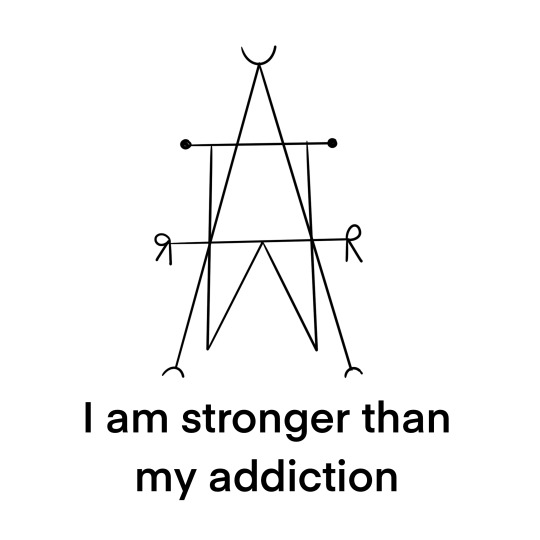
Made a new Sigil, per a request from a local metaphysical shop that sells my Sigil buttons. (Find me over on ig as @ButtonWitch)
Feel free to repost with credit, or use. Just don’t sell, thanks!
#Sigil#sigils#Sigil craft#witchblr#witches of tumblr#witchcraft#witch#florida witch#florida witchcraft
23 notes
·
View notes
Text
Saw a post on socials about an artist turning old telephone tables into tarot tarots so I picked up a cheap one locally from a vintage/antique seller and I’m trying my hand at refurbishing and painting it!
Wish me luck!





6 notes
·
View notes
Text
Dandelion Lotion Recipe
Here I am again, singing the praises of dandelions. As we already know by now, dandelions are high in Vitamin A, C, and B6, all of which provide excellent benefits for your skin!
The flowers contain high levels of beta carotene and lutein. Dandelion is high in magnesium, calcium, and potassium as well. All of these constituents provide support to the skin by helping with moisture retention and supporting skin function.

Keep reading
122 notes
·
View notes
Text
APPALACHIAN FOLKLORE 101
Appalachia has a rich history in the united states, which goes farther back than most tend to give it credit for. The Appalachian mountains are millions of years old, and humans have only lived in the region for 16,000 years or so, which means the mountains are bound to hold some mysteries and legends.
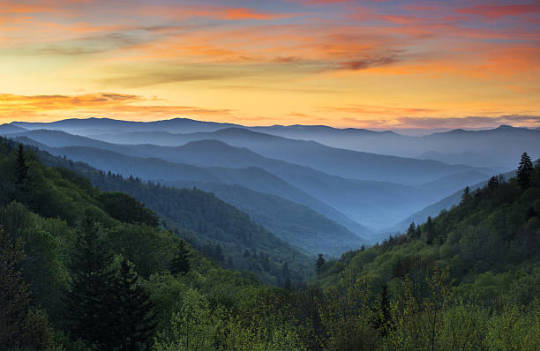
Many of these stories, and folk practices originate from the Native Americans, specifically Cherokee, and are mixed in with the superstitions brought over from the old world specifically English, Irish, and Scottish. As well as the practices brought over from the African Continent During the Slave Trade.
The Native population assisted the early settlers in Appalachia with ways to survive the area, grow food, and even forage for one of Appalachia's staple foods, RAMPS!!!
Let's delve into the history of Appalachian Folklore and the origins of everyone's favorite stories.
Cryptids and Myths
This is one of the most famous aspects of Appalachian folklore and one which outsiders know the most about, Appalachian Myths and their Cryptids that follow. Below I will go over a few of the more famous ones, which many have learned about, either second-hand or through living in the area.
The Moon-Eyed People
There was a group of humanoids called the Moon-Eyed People, who were short, bearded, and had pale skin with large, bright eyes. They were completely nocturnal due to their eyes being extremely sensitive to light. Although not mythical, they were considered a separate race of people by some. The tribes viewed them as a threat and forced them out of their caves on a full moon night. They were said to have scattered to other parts of Appalachia as the moon’s light was too bright for their eyes. There are some early structures that are believed to be related to the Moon-Eyed People, dating back to 400 BCE. Some theories suggest that they were early European settlers who arrived much before Columbus discovered the Americas. Other theories suggest they were people who had Albanism.

Image of The Moon Eyed People Statues in Murphy, North Carolina
Spearfinger
Spearfinger is a Cherokee legend of a shapeshifting, stone-skinned witch with a long knife in place of one of her fingers. She often was described as an old woman, which she would take the form of to convince Cherokee children that she was their grandmother. She would sit with them, brush their hair until they fell asleep, and then kill them with her “spear finger.” She had a love of human livers which she would extract from the bodies of those she killed. It was said she left no visible scars on her victims. She carried her own heart in her hand to protect it, as it was her one weakness. As the legend goes, she was captured and defeated with the help of several birds that carried the information to defeat her. Though she has been destroyed, sometimes you can hear her cackles and songs throughout the mountains.

Image of SpearFinger Cherokee Legend
W*ndigo
This spirit is said to go to where its name is called allowed so since most of us already know the name I won't be writing it out in completion. So out of respect for some of our native readers, it will remain censored
The W*ndigo is a creature, sometimes referred to as an evil spirit, that is said to be 15 feet tall with a body that is thin, with skin pulled so tight that its bones are visible. Many native legends view it as a spirit of greed, gluttony, and insatiable hunger. It is a flesh-eating beast that is considered most active during the colder months, and its presence is easily felt and smelt. It has been described as having a distinct smell of rot and decay due to its skin being ripped and unclean. It produces an overwhelming urge of greed and insatiable want. Most notably, it is not one to chase or seek after its prey; instead, it uses its terrifying mimicry skill. It often mimics human voices, screams, loved ones, or anything that might entice its victim to come to it. In some cases, it is believed the W*ndigo is a spirit that can possess other humans and fill them with greed and selfishness, turning them into W*ndigos as well.
Appalachian Folk Practices
Many of the common Appalachian folk practices stem from things the Native Americans and Enslaved Africans taught them mixed in with cultural practices from Europe. Here I will go over some of the most common practices done by the Appalachian people
Water Dowsing
water dowsing is a practice that has been done for hundreds of years in many different cultures. This practice was brought over by the European settlers and was how many people of the time found where to dig for their water. The practice itself is simple in nature, you take a forked branch from a tree and hold it in both hands and walk around once the stick points down due to the electromagnetic current that's where you dig your well.
this isn't exactly the best way to find water but many people still do it to this day.

Image of Someone Using A Dowsing Rod
Bottle Trees
This practice originated in the Congo area of Africa, in the 9th century A.D. brought to America by the slave trade, in the 17th century. Bottle Trees, were popular in the American South and up into Appalachia, the spirits are said to be attracted to the blue color of the bottles, and captured at night, then when the sun rises it destroys the evil spirits.
This is still practiced in the modern era by many Appalachian Folk Practitioners

Image Of Bottle Trees
SIN EATING
This practice originates from the Ancient Greeks and Egyptians, it branched to many different cultures and has been practiced since antiquity by many Christian and Catholic tribes. And later making its way to America via immigration. The process was once a profession in Appalachia, in which food was placed on or near the deceased and a person dressed in all black would eat the food absolving the dead of all of their earthly sins. This essentially cemented their ability to get into heaven. The practice while sparsely done any more as a profession, it can still be found in many peoples funeral services to this day around the world.
Many cultures still do this practice and the sin eaters usually choose to hide their identity as the practice is seen as taboo to this day.
Popular Herbs To Forage In Appalachia Folk Practices
Wild Leeks or RAMPS!!!
Allium tricoccum, are a species of wild onion native to North America. They are a delicacy, and hold a special place in the hearts of many Appalachians. Native Americans such as the Cherokee ate the plant and used it medicinally for a variety of purposes including as a spring tonic. Early European settlers learned how to Forage from the Indigenous People and continued to eat and use ramps medicinally. Ramps provide many nutrients and minerals and historically have been used to nourish people after harsh winters.

*RAMPS poisoness Look Alike
False hellebore (Veratrum) is a highly poisonous plant that can be mistaken for a prized wild edible, the wild leek, or ramp (Allium tricoccum)
Chicken of the Woods
Laetiporus sulphureus. Chicken of the woods is a sulphur-yellow bracket fungus of trees in woods, parks and gardens. They are delicious and are loved by many foragers, Native Americans, and Appalachians alike. The Native Americans taught the early settlers that these were edible and have been a favorite ever since. Chicken of the Woods is most likely to be found from August through October, but it can be found as early as May and up to December depending on where you live.

*These have a poisoness look alike, Jack O Lantern mushrooms
The Jack-o'-lantern mushroom should not be eaten because it is poisonous to humans. It contains toxic chemicals that can cause severe stomach upset accompanied by vomiting, diarrhea and headache
PawPaws
The Pawpaw Asimina triloba, is well loved by Appalachian locals as a native fruit with a tropical taste. Pawpaw fruit is the largest tree fruit native to the United States, and its custard-like flesh has been said to taste like a combination of banana, pineapple, and Mango. The pawpaw has been used by Native Americans for centuries for both its fruit and its medicinal properties. Many tribes, including the Osage and Sioux, ate the fruit; the Iroquois used the mashed fruit to make small dried cakes to reconstitute later for cooking. PawPaw season is late summer, look for the smell of rotting fruit, eat the ones that are squishy to the touch.

*They resemble mangos on the trees, many options to eat the ones that are on the floor already as they usually have ripened, but you can also ripen them at home.
Appalachia has a rich and beautiful history filled with magic and delicious food. But the only real way to learn about Appalachia is to visit it. Go and speak with locals, learn about the history, their delicious foods, and powerful Grandma magic, and you too will fall in love with Appalachia.
Thank you for sitting down and having Tea with me on the Other side of the Great Divide

606 notes
·
View notes
Text

This is my first time seeing a rainbow novena candle at Walmart. It’s going to go perfectly on the queer altar I’m building.
#witches of tumblr#witchblr#witchcraft#witch#florida witch#altar#florida witchcraft#candle magick#low budget witchcraft#walmart witchcraft#queercraft#queer witch
6 notes
·
View notes
Text
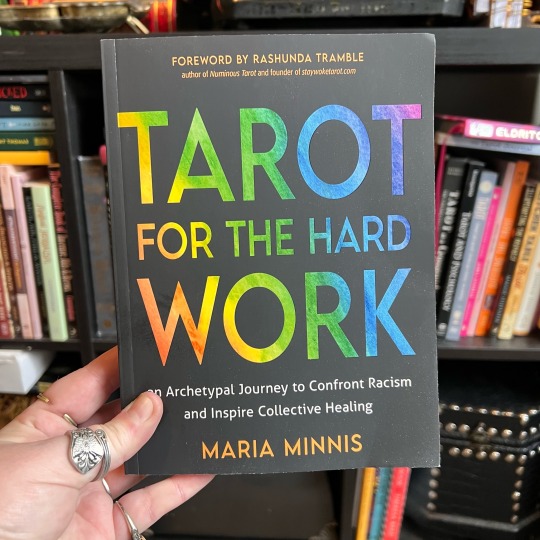
Let’s go!
#witchblr#witches of tumblr#tarot for the hard work#how to be an antiracist#tarot#tarot reader#what I’m reading
1 note
·
View note
Note
Is it true that gingerbread cookies were originally created for saturnalia? My friend just sent me this meme

Literally answered this last month, but I know Tumblr's search is absolute shit (even though it was tagged) so it's easy to miss.
Here's what I said then:
I feel like every year there's a new "did you know..." that inevitably turns out to be false.
This seems to be one of them.
First off, while ginger was a spice available to the Romans, there's no real link between them what we now know as gingerbread -- which is a much later invention. But that aside, the only sources I can find about a "man shaped cookie" connected to Saturnalia seem to go back to unsourced nonsense. Even the ones who cite something, if you follow the path to the source they do cite... it's one with no citations.
Written by a mystery writer.
And we fucking know exactly when gingerbread men were invented.
They were created for Queen Elizabeth I, who had the cookies cut to resemble visiting foreign dignitaries. And then they caught on.
So, if a person-shaped cookie existed in connection to Saturnalia (which I don't think it did but I will admit I wasn't exhaustive in my research), it is unrelated to the gingerbread man.
(Honestly this feels like yet another one of those things that got started with anti-Catholic propaganda 100-200 years ago and has become another ahistorical talking point -- but I'm just going off of vibes on that one)
So yeah. The romans didn't make gingerbread or man shaped cookies -- so "gingerbread men" are not a Saturnalia thing.
This is the new hill I'm going to have to die on, huh.
92 notes
·
View notes
Text
This person and this server is very transphobic, too.
WARNING TO WITCHES OF COLOR
Regardless of the claim of "all paths welcome" the owner of this server is incredibly intolerant and this server is exclusively made for, and I quote "European Pagans and Witchcraft". Unfortunately to I did not grab screenshots before I was banned, but on two different occasions on jumping around the server the owner was quick to constantly question my definition of magic, how my race (openly latino) had any context for subjects related to paganism, and in a final discussion in asking for the definition of Conjure, explained that ATRs ("African religion") did not fall into the definition of paganism or witchcraft since the beliefs were not European. when confronted by the fact that The Egyptian Pantheon, a very historically non-white area was included, and how hypocritical this was, I was promptly banned. None of which of these arguments where originally insighted by myself, besides quite literally, an unrelated Etsy ad for a "killer love conjure" that was shown in memes I agreed was distasteful.
Clearly and plainly shown the owner of this server has no intention to make an inclusive space, do not be fooled.
Beware joining this server.


199 notes
·
View notes
Text


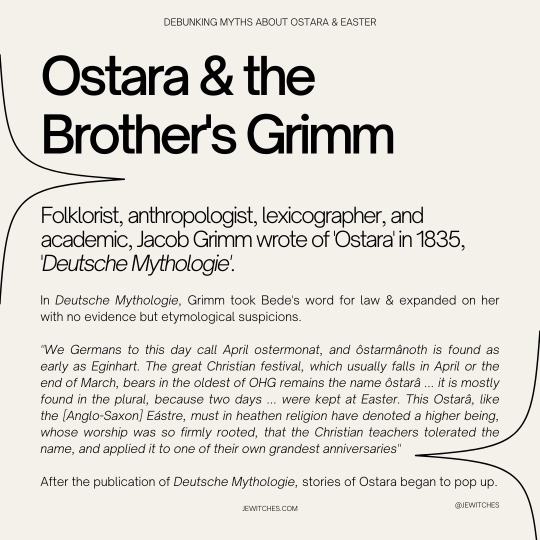


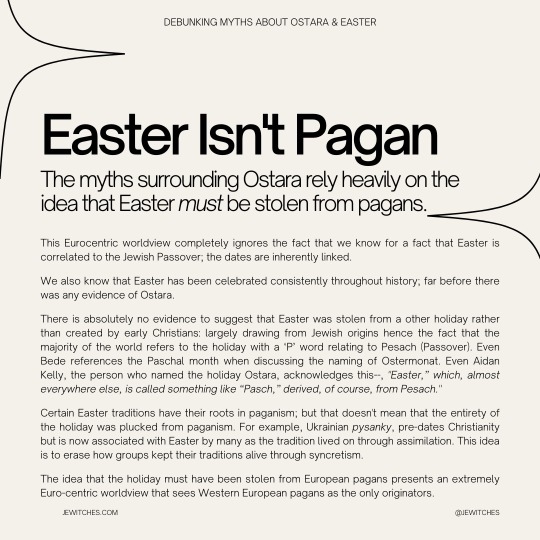



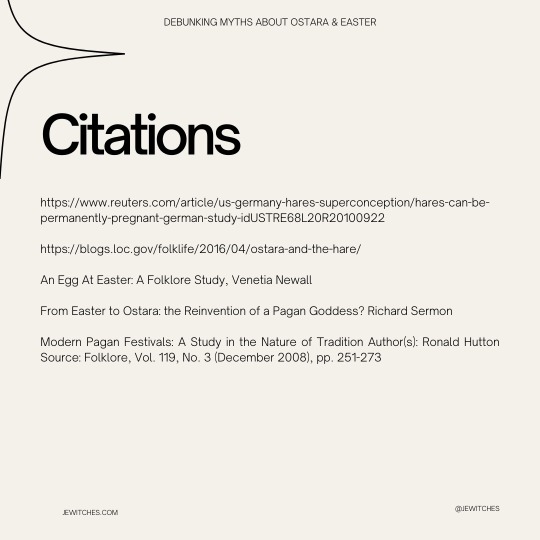
Every single year, without fail, we deal with the fact that the internet is obsessed with promoting the misinformation that Ostara must have been stolen from Easter.
People will argue until they’re blue in the face…But they won’t provide citations or evidence to the contrary and the reason why is simple: there isn’t any.
If you find that celebrating Ostara brings you joy: we aren’t here to rain on your parade or stop you in the slightest.
But misinformation, even misinformation that sounds cool and serves to further rhetorical goals, is still wrong and harmful.
So, after years of promising it, we’ve finally delivered: Easter isn’t stolen from Ostara.
Have questions? We’re happy to answer!
Make sure to follow our Instagram @jewitches for the ongoing discussion!
5K notes
·
View notes
Text


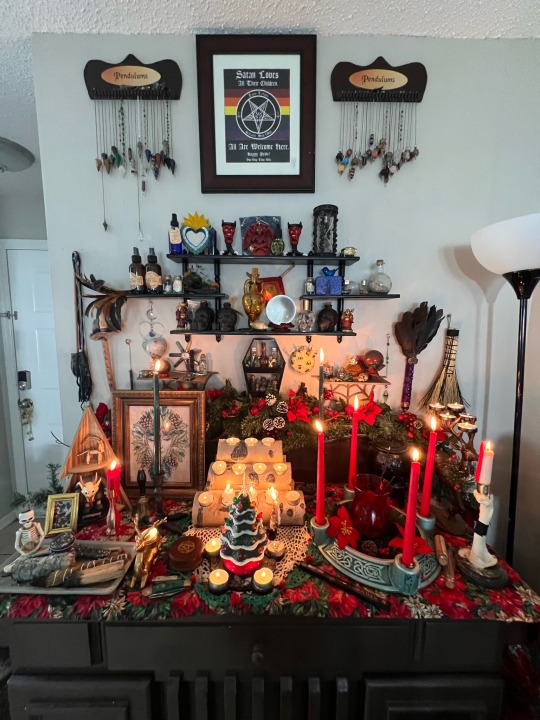

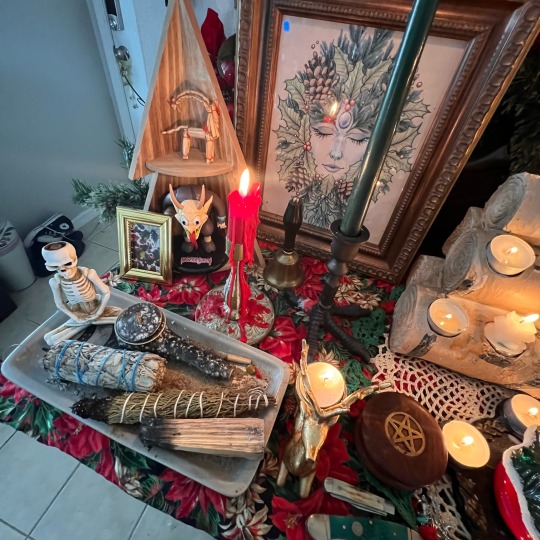


I really only dress my altar up for winter solstice, so here it is! It’s more wishful thinking than anything because I live in Florida and this is the only time of year my altar doesn’t represent that.
317 notes
·
View notes
Note
Hey-o! Tis the season for people to talk about how the holidays were "actually pagan" and I'm on the hunt for sources about how that's really not the case, if you have any you'd recommend!
Okay, so the problem is there are so many weird "Christmas is stolen!" bullshit memes going around, it's so hard to just give you a comprehensive list of sources. Christmas celebrations have evolved as the religion has spread, and different things come from different times...
The key here is to go for academic sources. This is a question of history, and a well supported historical research is going to tell you whether they're operating from primary, secondary or tertiary sources.
So while I can't give you a simple list, let me give you a couple of examples off the top of my head and give you tips on how to investigate any the dumb claims that get passed around.
Christmas being in December: So a lot of people go for the "Christmas is in December so it can steal from [INSERT SOLSTICE CELBRATION]" is ahistorical... because we know exactly why Christmas is in December. Because the guys who made the decision argued with each other and left behind written documentation. The two big names you need to look up are Clement of Alexandria (who pitched January 6th) and Hippolytus of Rome (who proposed December 25th). This is around the turn of the third century, and you can find both of their writings. Some folks have questioned the authenticity of some of Hippolytus of Rome's writings, but Clement of Alexandria's seem well supported. These were internal arguments about when the birth of Christ took place within the early church, and when they settled on late December. There are reasons for this, and you can read their arguments (it largely has to do with the importance of when Jesus was conceived -- they wanted that to be an important date and then added nine months to it). Importantly though, because linear time is a thing, this means Christmas was set in December before the Christianization of the Germanic and Norse tribes... so anyone who says Christmas was set to December to correspond with Yule doesn't understand the concept of "coincidences."
The Christmas Tree: The Christmas tree was invented in 16th century Germany. That's... that's just written down all over the place. Now, there are legends about Martin Luther being the first who did it -- but I'm pretty certain that's just an embellishment that got added on. There are preceding traditions where part of an evergreen was brought into the home as a part of solstice traditions (though some will claim the Egyptians did this? Which is wild -- likely misinterpreting their use of palm fronds as the same thing), but the act of taking a whole ass tree, cutting it down, putting it in your house, and decorating it? That's 16th century Germany all the way. You can rabbit hole so many sources on that one, but honestly just pick apart the citations on the Wikipedia page. Putting a branch in your house and dragging a whole tree in are very different acts.
Jesus's story is copied from [INSERT RANDOM GOD]: There are so many of these, and some are just downright disrespectful to major world religions (the Krishna version of the meme especially). The answer is... just see if what the meme is saying about the god is supported by the mythology. Like I've seen ones that says Dionysus was "born of a virgin." If you know anything about the Greek gods, you're probably already laughing on the floor. Horus gets dragged into this too, because Gerald Massey was trying to pull a "White Goddess but with Dudes." But any serious research on Horus will tell you the supposed parallels aren't supported by the mythology.
So sorry, this wasn't so much sources you can use as it is how to look for them to begin with. Because there's just so, so much. This isn't even covering cases of syncretism, where pre-existing cultural traditions got continued post-Christianization. Because it's almost always the case that if a pre-Christian practice endured post Christianization, it's because people decided to keep doing it -- not because the church was trying to "steal" it. The latter means there was some mustache twirling plan behind it, when the former means (usually) the church went "Well, they're paying their tithes and saying it's for Jesus, so who gives a shit?"
I'm just going to finish this off with linking to my podcast episode on this, along with Ocean Keltoi's great Yule video on the topic. Hopefully that helps.
youtube
188 notes
·
View notes